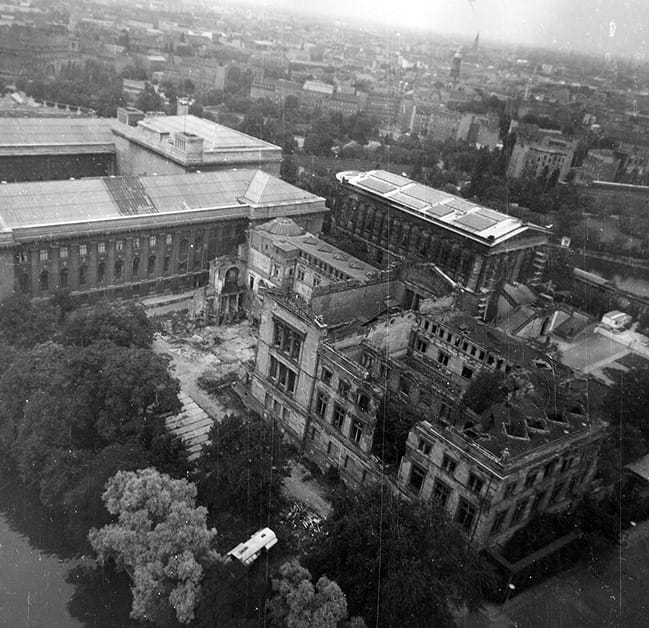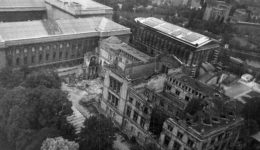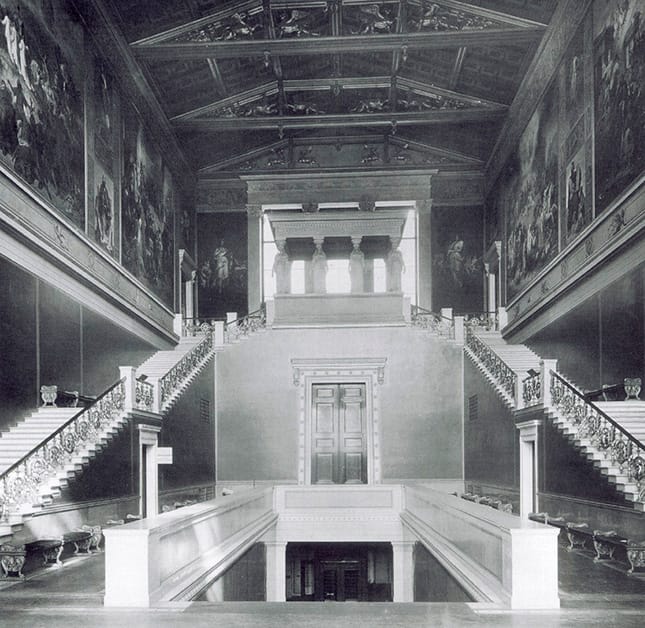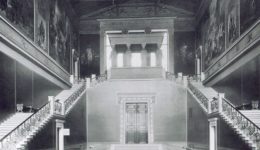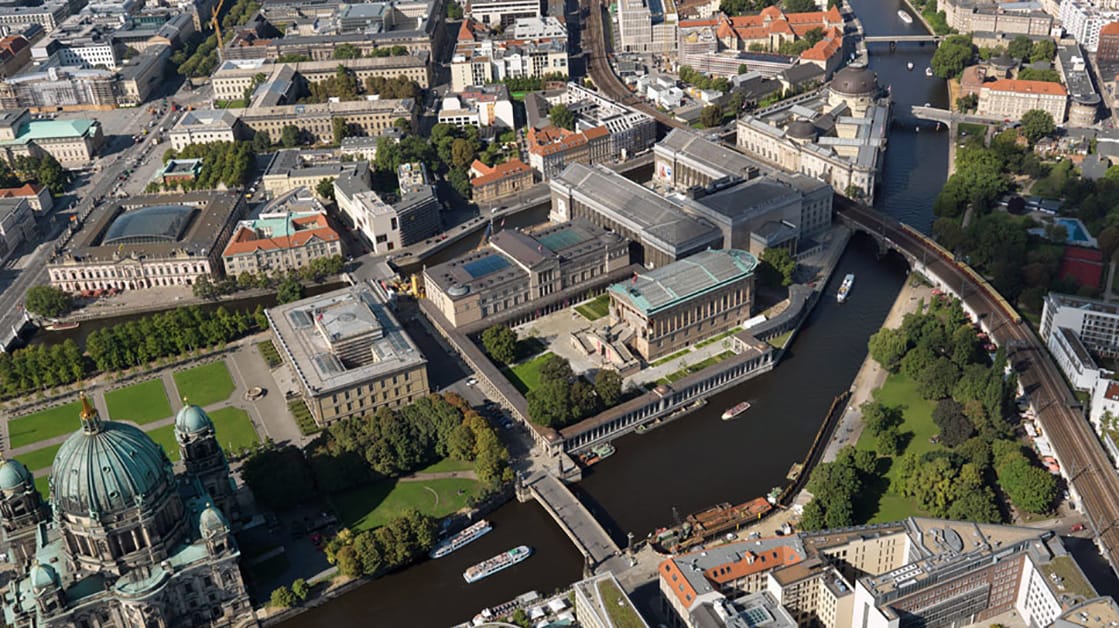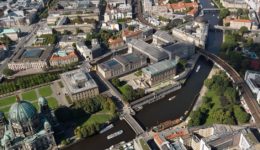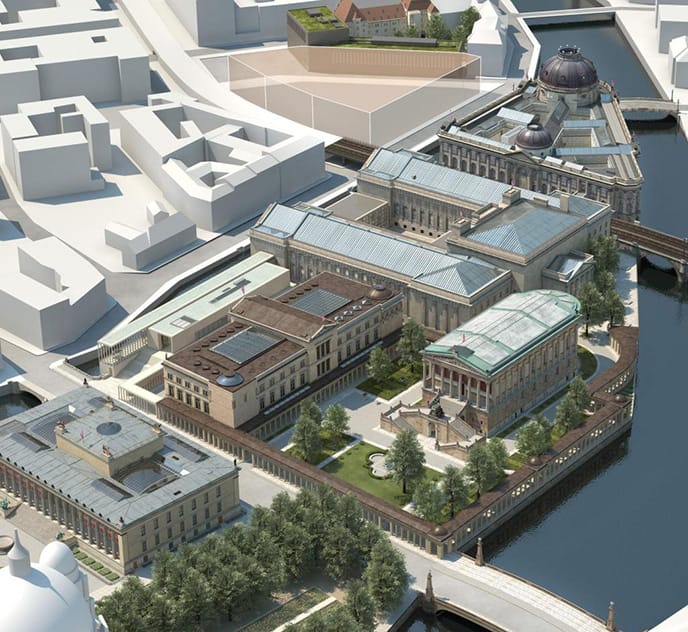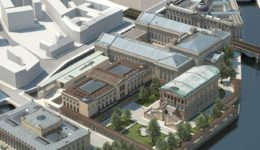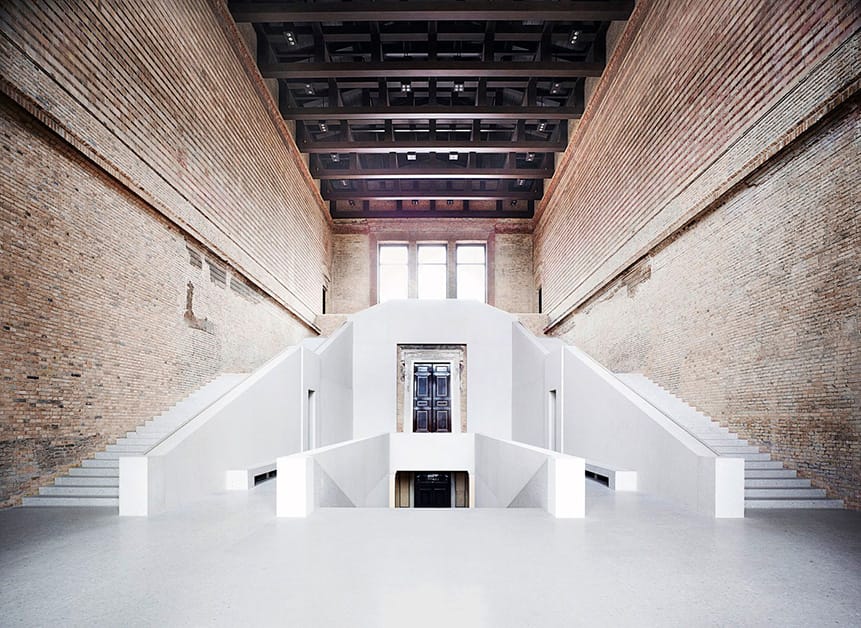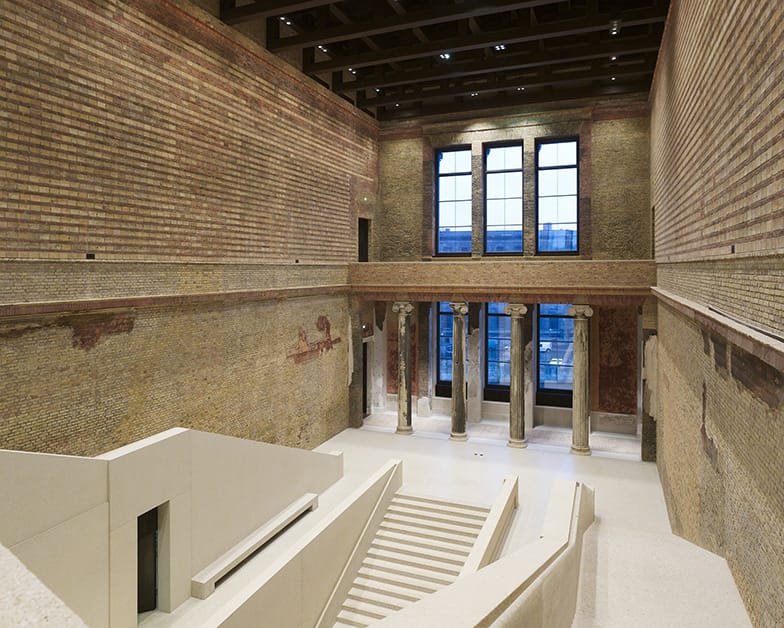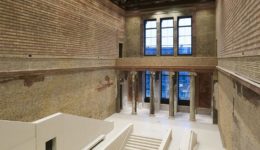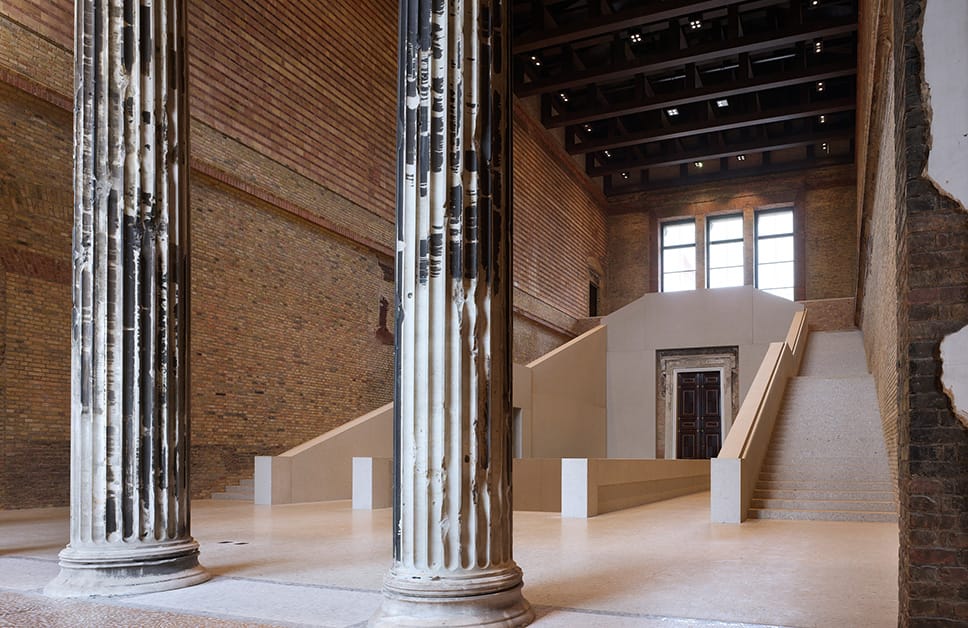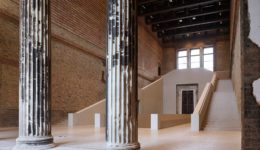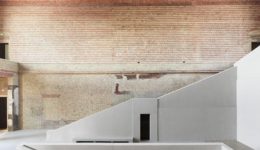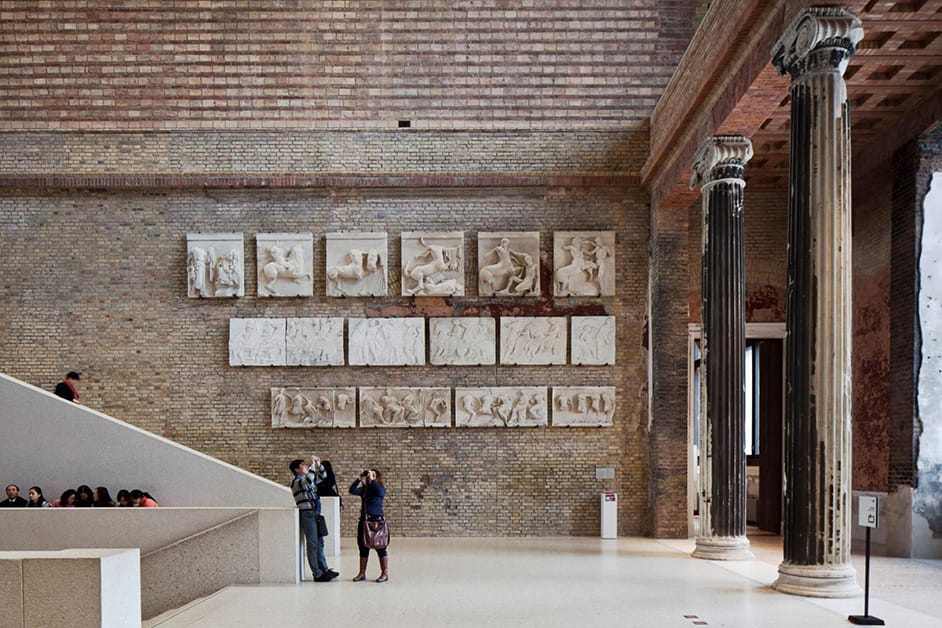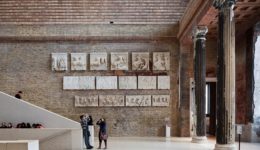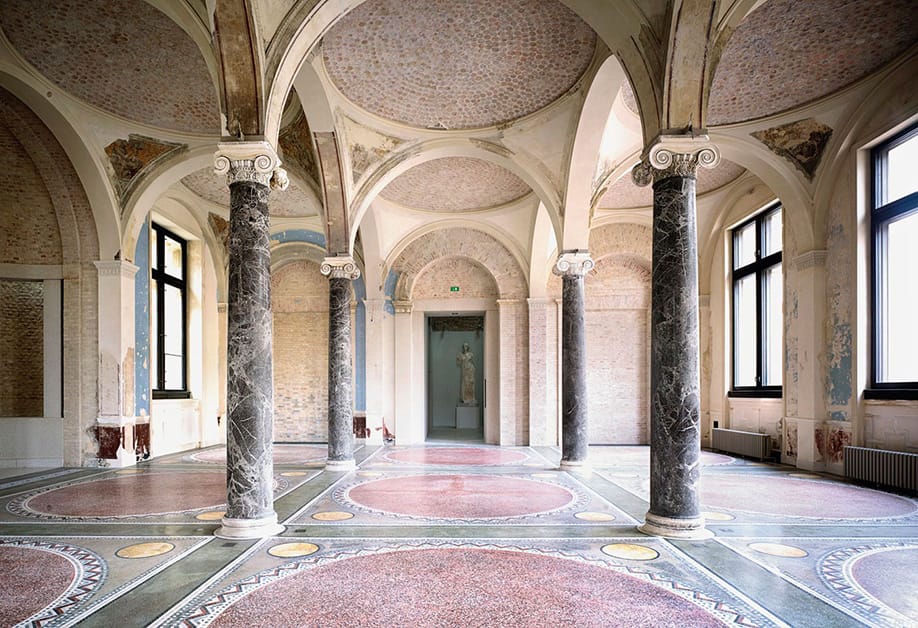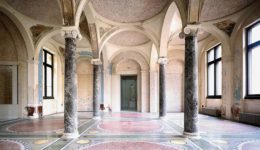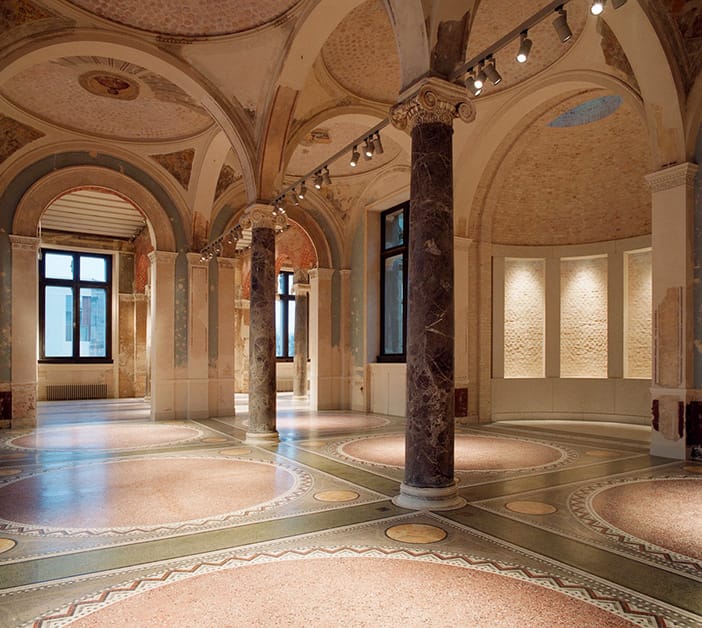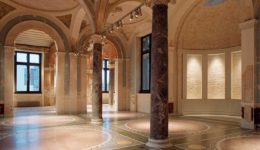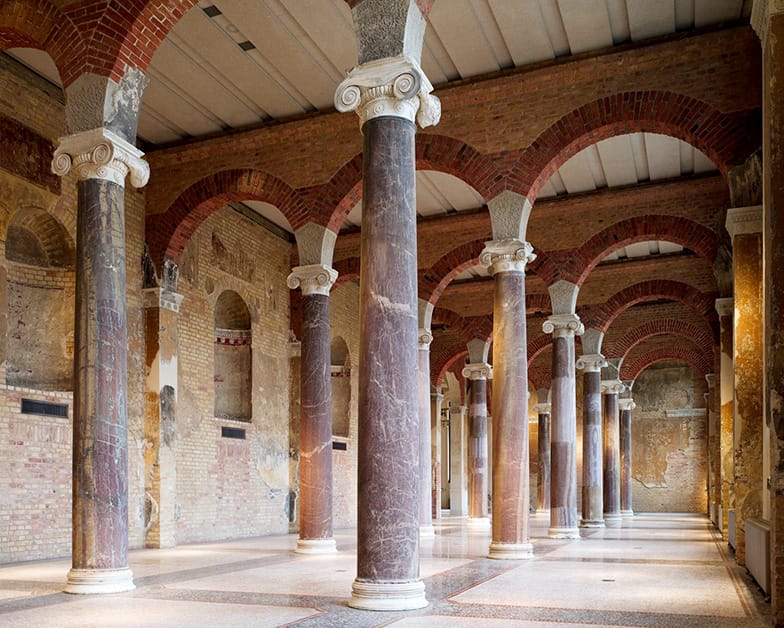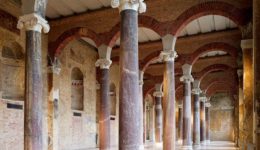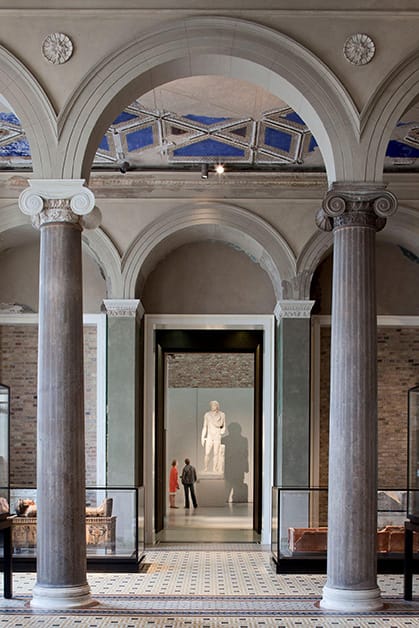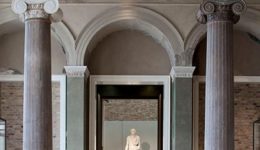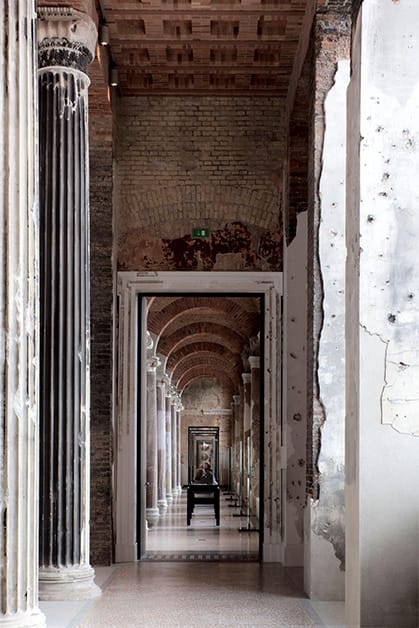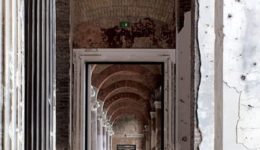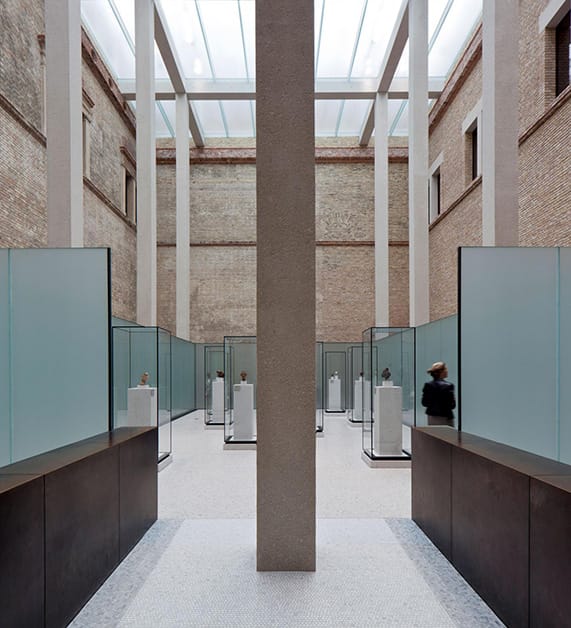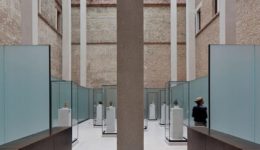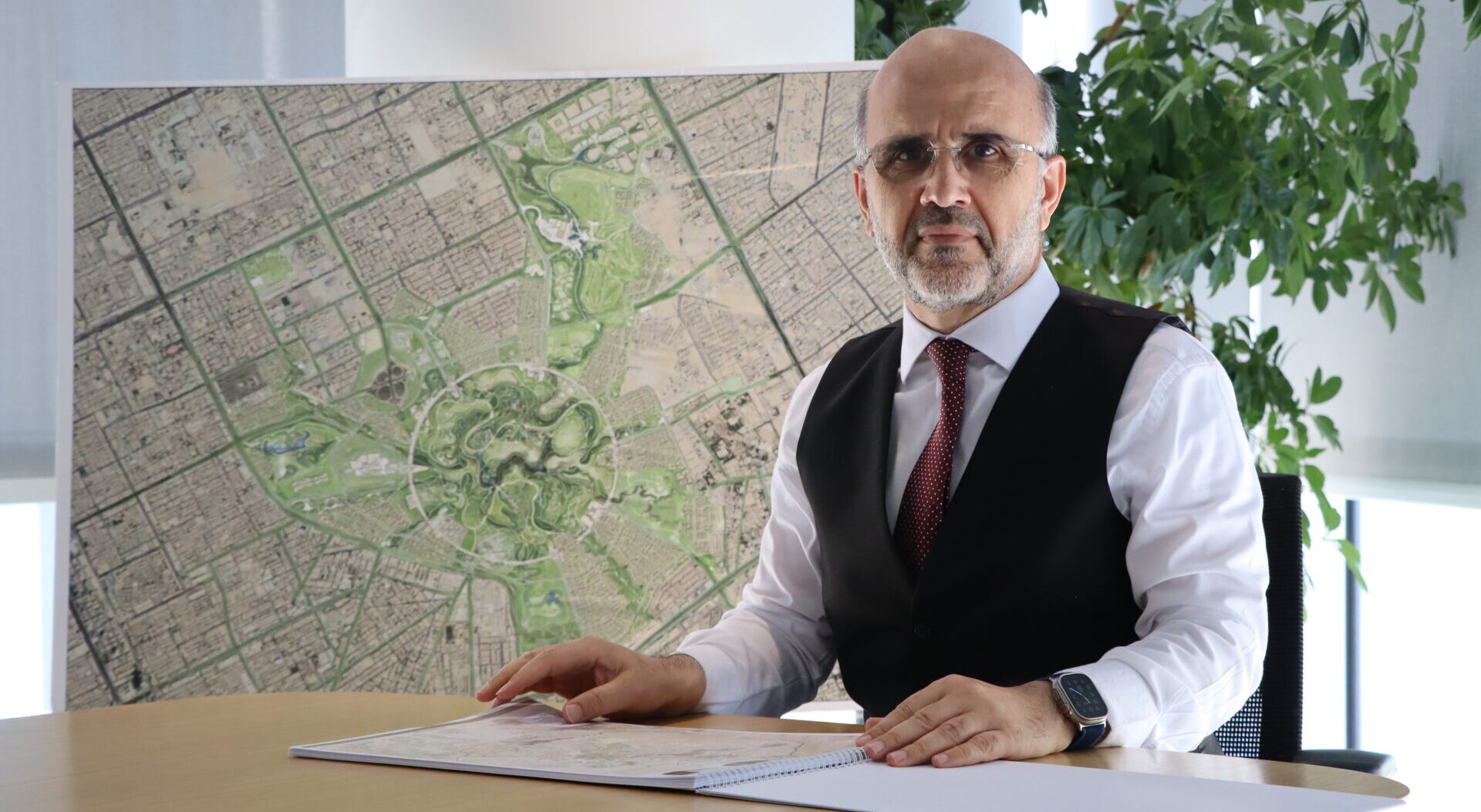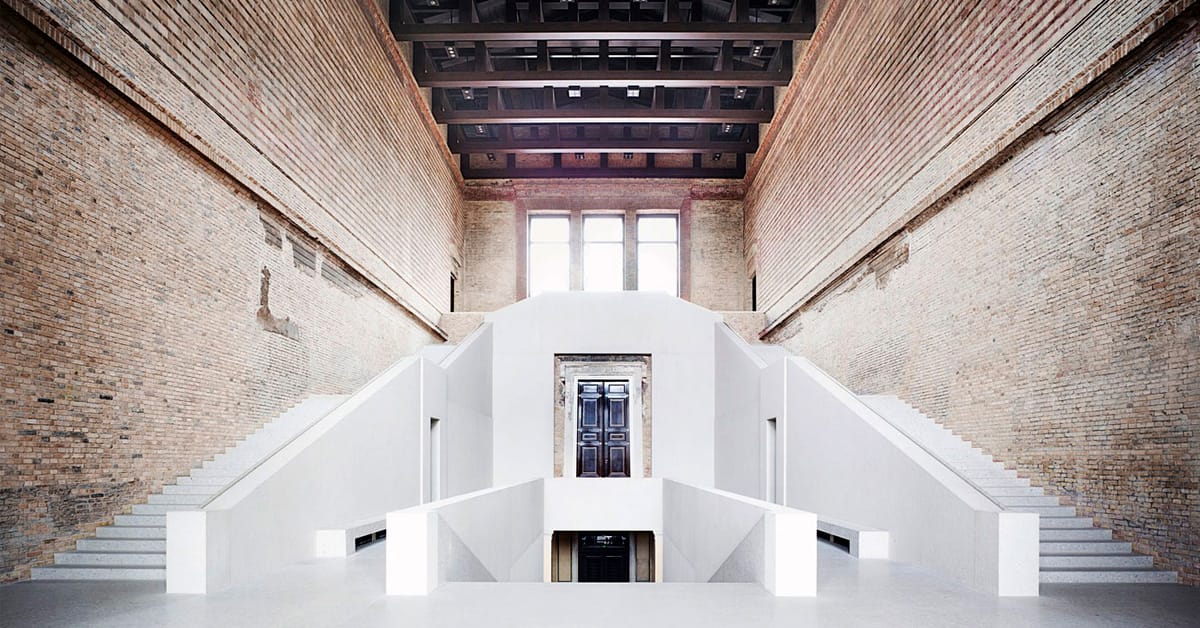 Neues Museum, renovated 1997-2009 by David Chipperfield Architects, Berlin, Germany. Photo © Jörg von Bruchhausen.
Neues Museum, renovated 1997-2009 by David Chipperfield Architects, Berlin, Germany. Photo © Jörg von Bruchhausen.
The reconstruction of the Neues Museum by David Chipperfield Architects artfully weaves contemporary forms into a tattered historic fabric, creating a sense of architectural continuity that reflects the passing of time and the events that shaped history.
Originally opened in 1855, the Neues Museum in Berlin was built to display archaeological artifacts gathered from around the world. Designed by Friedrich August Stüler, court architect of King Friedrich Wilhelm IV, the Neoclassical building featured galleries tailored to their contents, with decorative motifs inspired by Egyptian, Byzantine, or Grecian cultures. During World War II, bombing reduced entire wings of the museum to rubble, and where walls still stood their once-ornate finishes had been blasted away to reveal the structural brick beneath. The ruins were almost completely neglected until 1997 when David Chipperfield Architects, in collaboration with conservation architect Julian Harrap, was selected to rehabilitate it, beginning a 12-year design and building process completed in 2009.
Rather than restoring the museum to its previous condition or building an incongruous modern addition, Chipperfield stitched together the extant architectural fragments with simplified concrete interpretations of the missing forms. Due to the fragmentary nature of the ruins, no single solution could be employed throughout the museum. Echoing the intentions of Stüler, who designed each room to reflect its contents, Chipperfield Architects crafted a unique response to every space, restoring what could be preserved, infilling as necessary, and thoughtfully integrating contemporary building systems. The quiet interventions restore the museum’s massing and spatial sensibility to capture the beauty of the original structure without replicating what was lost or fetishizing the ruins that remain.
The influential nineteenth century English critic John Ruskin (1819-1900) described restoration as “the most total destruction which a building can suffer.” He believed a building’s original spirit could never be recreated; but the building could be imbued with a new spirit that reflects the current age as well as “some mysterious suggestion of what it had been, and of what it had lost.” Chipperfield’s design preserves that “mysterious suggestion” to offer visitors a new understanding of the old building. In a city that still struggles with addressing the past, the Neues Museum embraces it, offering a compelling model for reconstructing historic buildings scarred by conflict.






